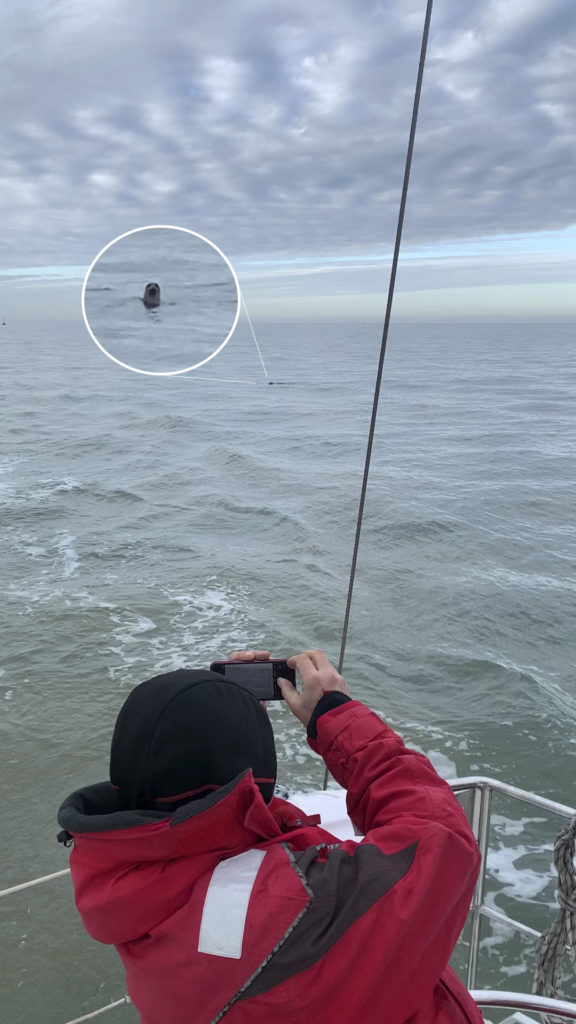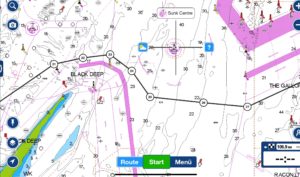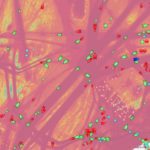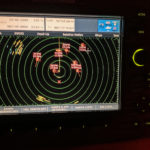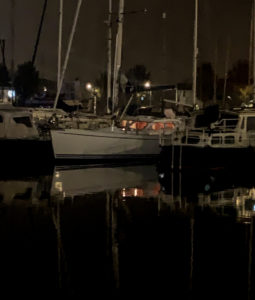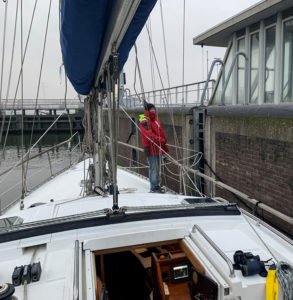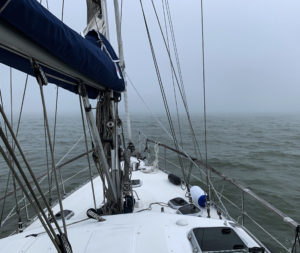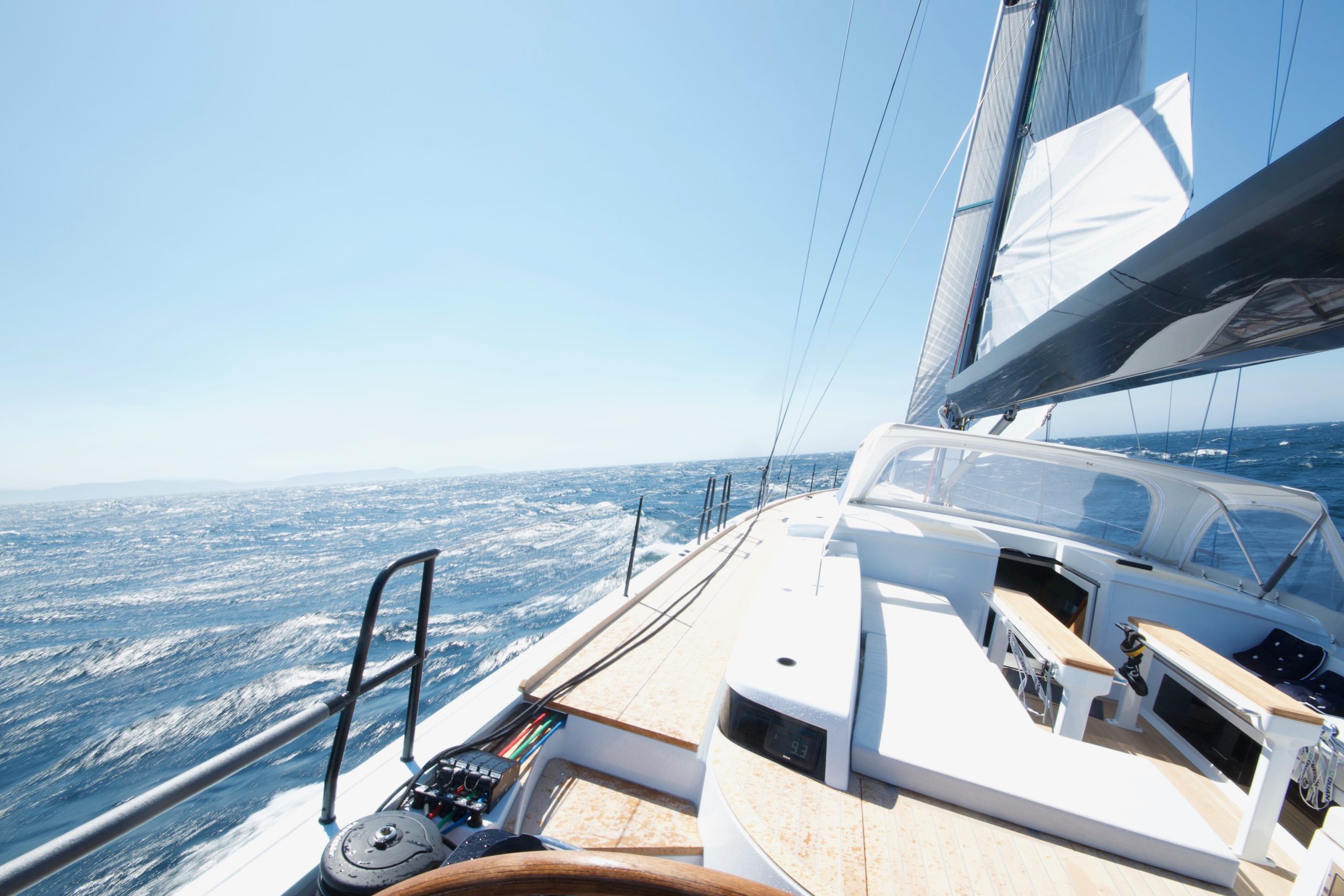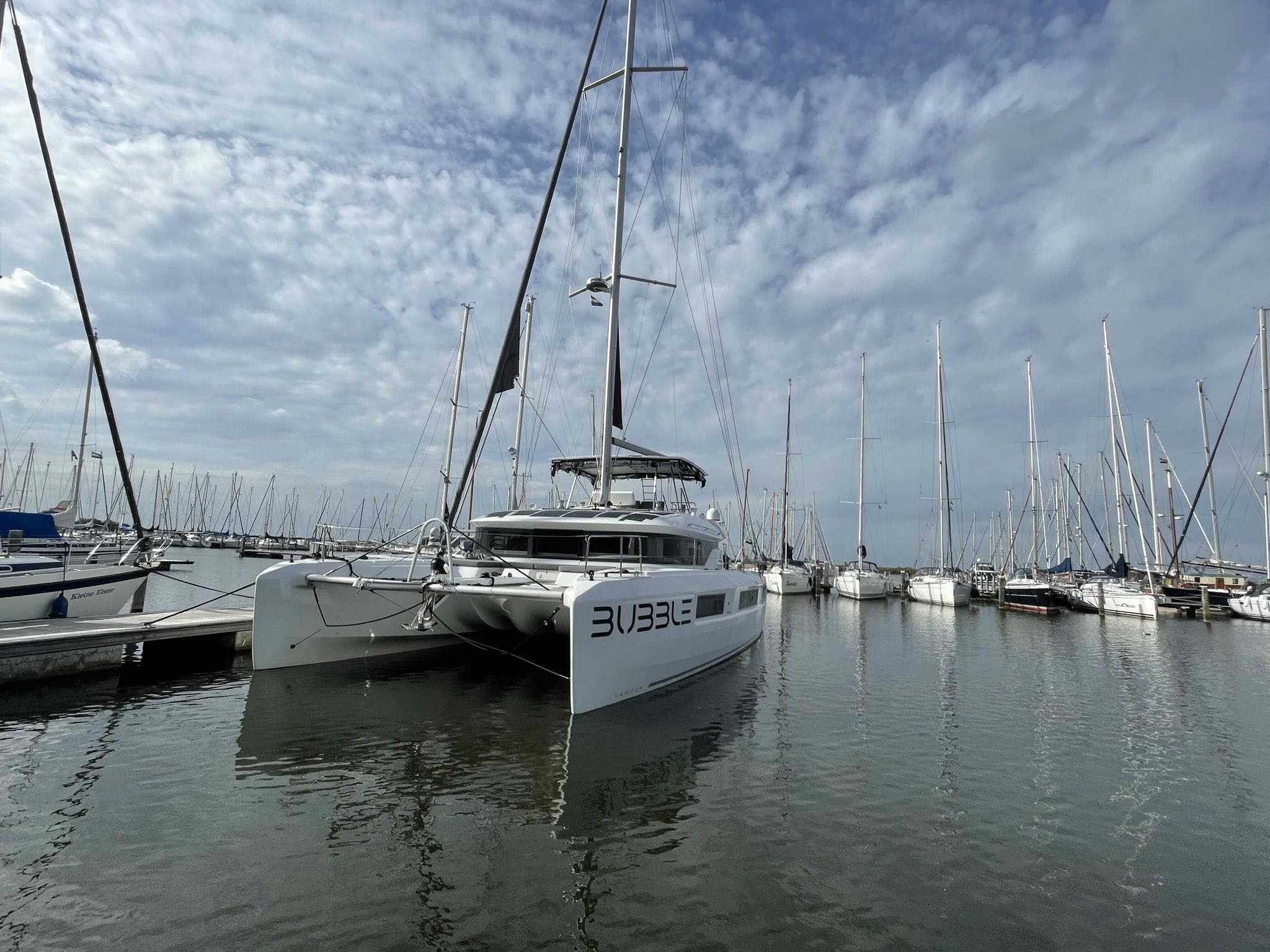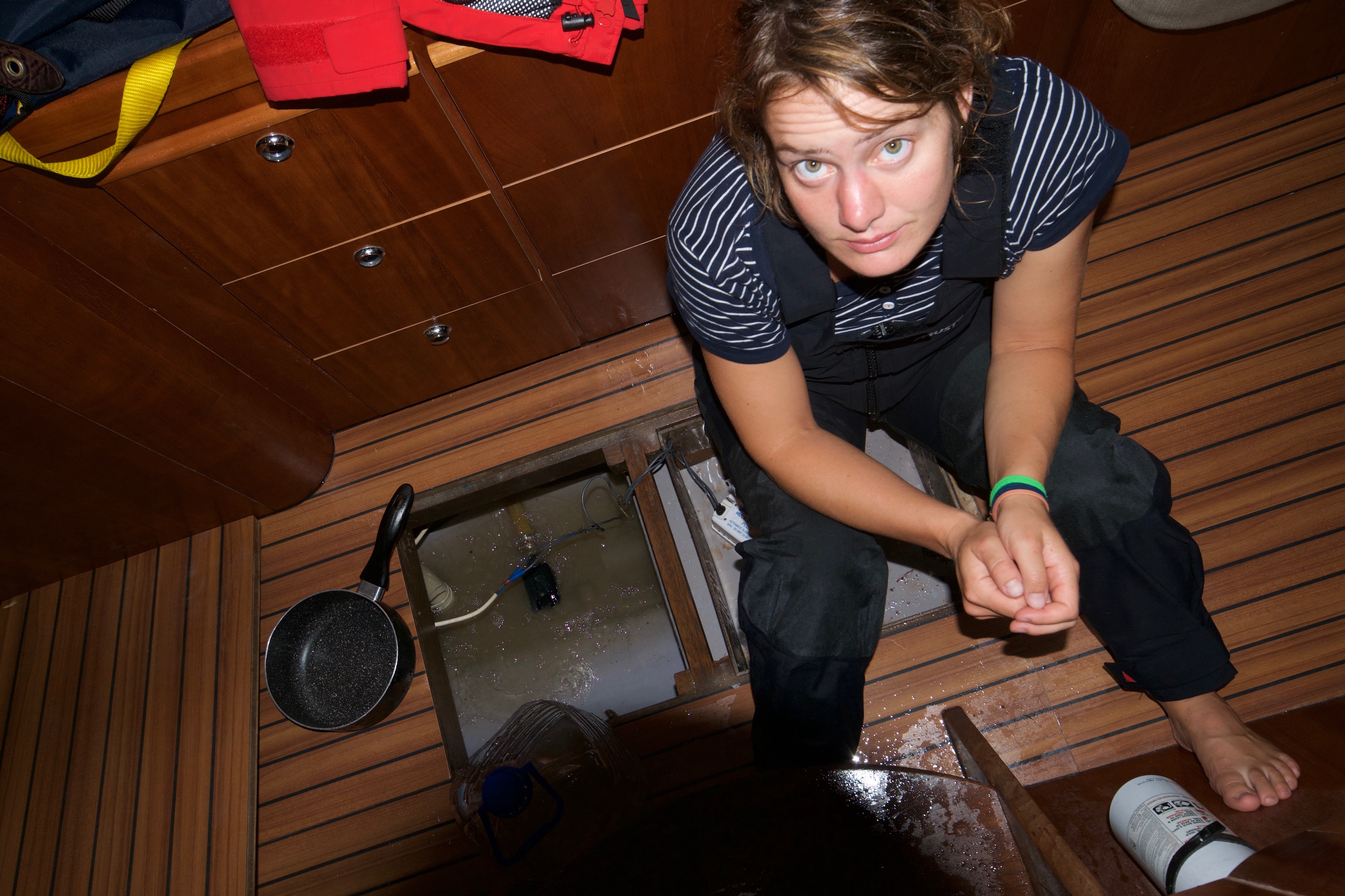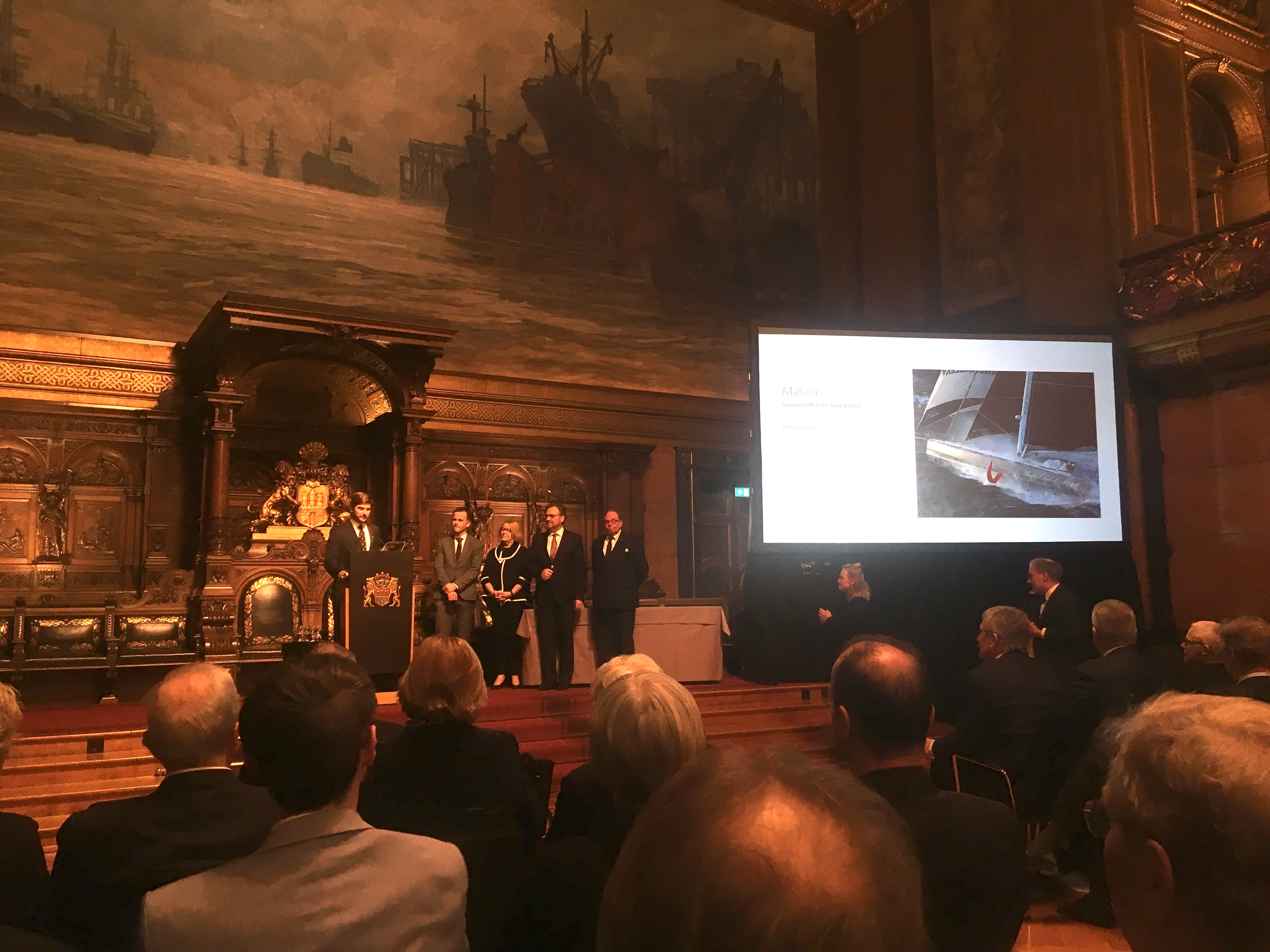Yacht transfer in late autumn: England (Essex Marina) to Holland (Flevo Marina Ijsselmeer)
by Thomas Götzen
The last flyover of 2020 was a special one for us in many ways. Crossing the tidal waters of the North Sea during the autumn storms is an interesting task in itself, but the ticking Brexit countdown and the additional uncertainties of the ever-changing coronas in different European countries made it a challenge of a special kind. Surprises included.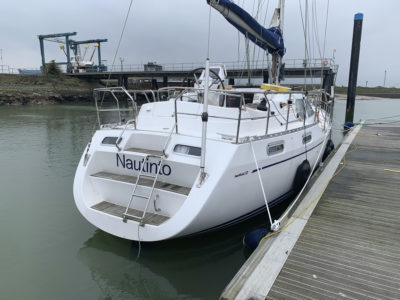
But first things first: At the end of October 2020 we received a call: A German yacht buyer was about to conclude his sales negotiations with a broker at Essex Marina, near London, and was looking for an experienced escort for the passage of his Nauticat 37 to Germany. He himself and 2 acquaintances should be there. We discussed the matter and quickly agreed. Possible routes were created by Yachtskipper.de and weather planning already started when the news arrived that the customer’s crew was no longer available.
Ok, we have a network of experienced sailors and were optimistic that we could provide an experienced crew even in the late fall of time. After 2 days we could also present them: Nicholas and Michael would accompany me as skipper. We continued with the planning. The next day we received the next surprise: Our customer and new owner in Spe informed us that he, as a doctor, could no longer travel with us to England due to current corona protection regulations.
Normally, this would not be a major problem – most of our transfers take place without an owner. But taking over a yacht after purchase, including checking all the papers, inspecting all the systems, the hull, the standing and running rigging, is still something different from a cruise escort.
Together with the customer, we started planning the takeover, studied the extensive appraisal, drew up checklists, made phone calls to the broker and the old owner in England. In parallel, the notary and lawyer prepared the transfer.
All parties were willing to complete the purchase, takeover and transfer before Brexit. And so within a few days we cleared up all the problems and were ready to fly to Essex. But now the weather window had closed, and the Brexit clock kept ticking….
A hurricane off the U.S. coast had made its way to Europe. It reached Ireland as a full-blown autumn storm with gusts around 50 knots. It was followed by further lows like a string of pearls. There was a daily weather briefing by phone and after 10 endless days we finally found the gap.
On November 24, 2020 in the morning at 06:00 we stood at the airport in Düsseldorf and filled out sleepily Corona forms of the English health authority, hoping for a problem-free entry. 3 hours later it was almost done: We were standing at the baggage carousel in London-Heathrow. Around noon we arrived at the Essex Marina on the River Crouch.
Victor, the previous owner was an eighty year old Gentleman & Sailor straight out of a picture book. He gave us a warm welcome. What followed was a marathon of checklists. At some point we had lifted every bilge lid, climbed the masthead with the bosun’s chair, checked the engine, and finally put the last check in the checklist. Now the second marathon started for me – the paperwork.
I was sitting in the office of Dillen, the broker, at a large English desk with tons of papers on it. Connected by telephone: Our customer with his legal counsel.
The papers had to be examined and checked for completeness. Dillen was “not amused” by the German thoroughness. I tried to loosen him up a little. After 3 hours and dozens of photos sent, we were at the end. All in order.
Outside temperature 6° Celsius. On board, the heating was running. Nicholas and Michael had cleared up and on the stove cooked a delicious soup.
It was a long day and we wanted to leave the marina early the next morning with the water running out. A last weather check and already we were gone in the bunks.
As we started the engine and cast off, the fog hung in tatters over the Crouch River. The wind was still asleep, but the outgoing water helped us with 3 knots of current toward Whitaker Channel. The rest of the fog cleared later as well. We enjoyed the morning alone on the river, with only a seal looking after us. After one hour we already reached “Foulness Sand” the beginning of the extensive Thames River Delta – the Thames. Whitaker- & Kings Channel followed, until a few hours and after 33 miles later we were facing the first navigational highlight of our passage:
Waypoint 21 – Danger buoy Trinity – was the start into the “traffic circle” that revolves around the lightship “Sunk Centre”.
In fact, one circles there like in a traffic circle counterclockwise….
Our exit was the Safe Water Buoy “Sunk E2” on the edge of the Traffic Separation Scheme – our course 65° northeast.
With our WP (Waypoint) 28/Tonne.
Sunk E
we left the protective TSS (traffic separation area) and the most challenging and dangerous part of the crossing began for us. With no TSS to regulate traffic, force it into lanes, and determine direction and right-of-way, several of the busiest shipping routes in the Northern Hemisphere converge here within the next 50 nautical miles. Not an optimal location for a 37 foot yacht without active AIS.
When it got dark, the radar therefore also had to perform at its best. Constantly we had the maximum number of targets that we marked as MARPA plot to get data like CPA and TCPA even without AIS. Nikolaus stayed on watch with me and Michael had to lie down in the bunk. We were highly concentrated and tense. Now was no time for mistakes. Theoretically, the KVR (editor’s note :collision prevention rules) applied here, but we did not want to – and as it turned out later – were not allowed to count on them.
We had prepared for this part of the route. A great help to plan ahead the traffic and the courses of the routes without TSS is offered by Marinetraffic.com with its function of “density maps”. If this function is switched on, all routes appear like furrows through the North Sea. The deeper, i.e. the darker, these furrows are, the more ships sail these courses. The stretch in front of our bow was furrowed like the face of an old sea bear.
It was night, but we had calm seas and good visibility. So we meandered through the lanes of the big pots until we were eventually surrounded. We saw from port one of those thick targets in the radar bearing down on us. CPA(Re. note: Closest Point of Approach): zero. Distance one nautical mile. Standing Bearing. There was no room for us to dodge without being on a collision course with other ships ourselves. There was no time to stare at the radar signal any longer, its position lights fixed us, eyes with red and green light! Apparently the guy on the bridge deck was otherwise occupied and needed addressing. We sent an urgent message into the ether. After what felt like an eternity and anxious anticipation, the pot turned and its green position light disappeared from our view. We breathed a sigh of relief…
Hours later height WP 29 of our route and without further incident, we changed course again before the approach to the Eurogeul (Rotterdam). Still about 60sm to the approach IJ-Geul, off Ijmuiden.
Our course towards Amsterdam was paved with oil rigs. 450 of these monsters are said to be up to mischief in the North Sea. Some flare their excess gases, visible from afar. Others look like oversized aircraft carriers. 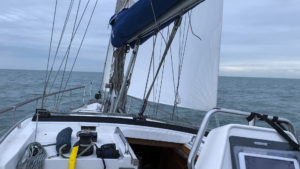
Slowly, twilight appeared on the horizon. We passed the big outer road before Ijmuiden. We have not seen so many ships at anchor here in recent years. We couldn’t tell if it was the aftermath of Corona, but it was a sad sight to see these cruise ships lying here. We passed the last roadstead before the approach, kept course to the breakwater, registered at the Ijmuiden lock, were assigned the southern lock and were allowed to enter directly. The Dutch have a heart for sailors. We were happy to have mastered this part of the transfer. I disappeared below deck for 2 hours and Nikolaus and Michael took over the watch. I closed my eyes reassured; Nikolaus knows the route and the crossing ferries.
The free watch went by in a flash and the registration at the Marina Amsterdam went off without a hitch. Our request to pay by bank transfer was granted. As dusk fell the lines on our mooring were tight.
The evening was not exciting – all restaurants closed due to Corona requirements. But the galley was running at full speed and we were still chatting in the salon.
The next morning welcomed us with rain. At 08:00 we threw off the lines.
The remaining distance was only 45 miles, 2 locks and 1 bridge.
We went through the center of Amsterdam towards our first lock. Past the train station with its countless docks, where the ferries buzz around the nest like bees.
We registered at the Oranjesluis and a little later we pass the gate. At the following Schellingwoudebrug (bascule bridge) we then have to wait another 10 minutes. It remains closed during rush hour.
Our last stage had begun and held another unpleasant surprise for us: Fog rolled in!
Ahead of us lay a narrow fairway through the entire Markermeer and that in the fog…. That didn’t have to be the case. I phoned Rainer (Yachtskipper – Kontor) and consulted with him. Rainer thought it was doable, and after my crew felt the same way, we continued on. Even at the end of November here is busy by inland shipping and so we went three fog watch. One at the helm, one at the lookout and one at the radar. The reported all targets with distance up to the bridge. The lookout tried to spot them early enough and the helmsman kept the course at the edge of the fairway, always ready to swerve! The visibility was 400 meters. We had a proven, good radar and through mobile reception also additional view of all AIS targets around us.
After 4 hours of concentrated fog sailing we reached Lelystad and the lock to the Ijsselmeer.
We were allowed to drive right in. Due to the fog we had our plan, still on the way clear to make, and so we now moored at the Wartetsteg after the lock and clean the complete yacht. It looked more well-maintained than when we took possession of it. Everything was shining, the duffel bags were already on the upper deck.
One more mile to the marina. The fog had lifted and we moored the yacht in front of the main building. 20 minutes later, the owner also appeared – what timing! Together we brought the Nauticat to her final berth and said goodbye after a detailed handover. The owner was visibly satisfied and we were also happy about the almost perfect cruise.
Thank you for the order!
Thomas Götzen / Yachtskipper.de














